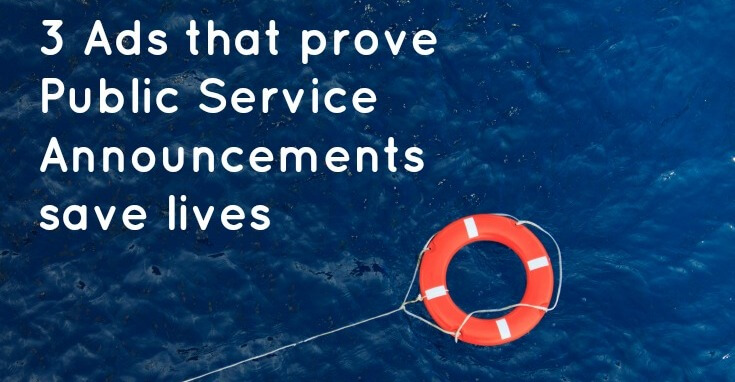It’s been over two years since I first blogged about how PSAs save lives. In fact, I almost forgot about it until Friday when I came up with a *brilliant* idea about writing a blog post about how PSAs save lives and saw that I had already started the series. My first post talked about how the platform of PSAs allows the messaging to literally help people save lives. In this post, I wanted to focus on how life-saving messages come to life through many channels and start to nudge behavior in a better direction.
This round, my first PSA is the “New Family Rule” created by two Canadian charities to help save lives from melanoma skin cancer.
They leveraged social media in a seamless way that gave the campaign longevity:
- I found out about it through a promoted celebrity tweet. In this case, they used a celebrity whose following is in their target demo (millenials) to get their attention about something they may normally pass on by.
- They created a call-to-action that is memorable and doable. By talking to parents and encouraging them “to make sun protection your #newfamilyrule” they are targeting the family decision makers with an easy-to-make habit.
- Their call-to-action became an easy hashtag, which then trended because of the amount of interaction they received on social media. Even media who shared the campaign online used the hashtag, which is sometimes half the battle.
The second PSA is the “Love Your Butt” campaign from Chris4Life Colon Cancer Foundation. They are part of the American Cancer Society’s 80% by 2018 Screening campaign, which has a goal of reaching 80% of adults ages 50+ getting their colon screened for cancer. In fact, increasing screening rates to 80% by 2018 would prevent 277,000 new cases of colon cancer and 203,000 deaths within 20 years!
What this campaign did best was leverage the creative messaging that makes people stop and think (and hopefully act):
- Really, who is comfortable talking about what goes on “down there”? (I am certainly not.) So, the creative cleverly played into that uncomfortableness by making the topic light-hearted enough that you can talk about it with your loved ones. We are huge believers that if you can cut through the clutter these days, you’re really giving your cause a chance to be understood.
- The creative was then posted everywhere, with a consistent look and feel. You could find this ad on TV and radio, in print, on the metro, on tshirts and bumper stickers and online, especially during Colon Cancer Awareness month.
The last campaign I want to highlight is determined to start changing behavior about food allergy bullying. If you’re someone that has a food allergy, a friend or sibling of someone with a food allergy, or a parent of someone with a food allergy, I think this will automatically hit home. But, what about those that don’t? It can be a life or death issue sometimes.
Like anything that makes someone different (skin color, sexual orientation, etc) food allergies are just another topic that make kids susceptible to bullying. So, knowing you’re not alone is powerful.
The way they approached the message in “It’s Not a Joke” campaign is what makes it effective–they illustrated the problem.
- In all of their media, they take their audience from the beginning to end of a bullying situation. They don’t just focus on the bullying. It’s important to know what happens before and after the bullying occurs so kids can relate.
- It even goes deeper, with the sharing of true stories from 2 kids that have experienced bullying. Their writing is authentic and approachable.
- They offer copious resources for just about every audience from those effected personally by it, including parents and kids, as well as places where allergies can present operational challenges, like schools and camps.
For those willing to put in serious time and effort to create behavior-changing public service messages, the effects can be significant. For example, Smokey the Bear’s “Only You Can Prevent Wildfires” campaign started running in 1944 and by 2003 they estimate the campaign had reduced the number of acres lost annually from 22 to 4 million. And the “Truth” campaign targeting youth with an anti-tobacco message started in 2000 when 23% of teens said they smoke and today only 8% of teens say they smoke.
The proof is in the pudding. PSAs really do save lives.



